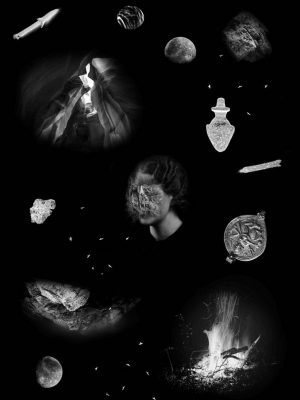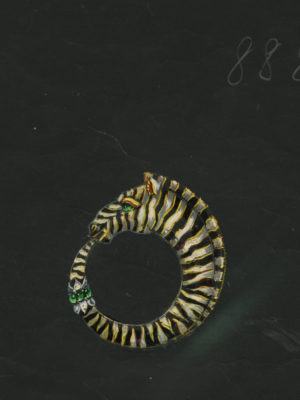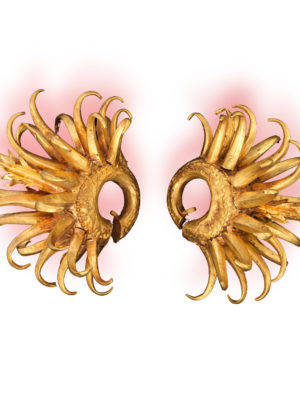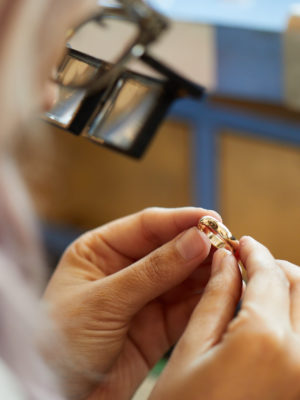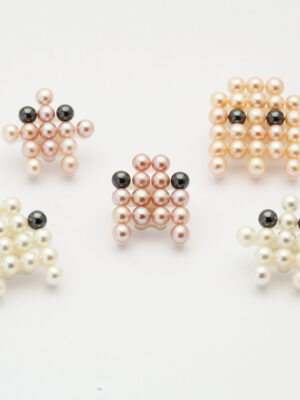In his landmark piece, Techniques of the Body, French sociologist Marcel Mauss wrote that ‘the body is the first and most natural human instrument.’ If the body itself is natural, then I propose the supernatural requires some object beyond the body itself, yet in dialogue with it. The use of objects to adorn or decorate the human body is as old as humanity, a feature that distinguishes the human from other species. Objects that decorate the body play a primary role in the expression of these aesthetic preferences; objects in dialogue with the body also play an essential role in the human experience of the supernatural. The world’s religions mark out their ritual specialists with certain specific adornments whose significance is understood widely by adherents and others alike. But everyday individuals all over the world also find that they have the power to imbue any object with a potency derived from a symbol meaningful only to them. Something inherent in the dynamic between an object and the body creates the potential for accessing something greater than the object and the embodied individual; the range of possible meanings and objects is entirely unlimited. Any object can become a symbol of something beyond its own intrinsic meaning relative to itself, and I see this uniquely and characteristically human capacity to symbolize, to see greater meanings in things than what the things themselves appear to be, as the key to the universality of the human experience of the supernatural.
By supernatural I mean that which is beyond anything materially evident to our sense perceptions in the world. The same capacity with which we comprehend that an object can be something more than what it appears to be allows us to comprehend that the world, the entire order of reality, can be something more than it appears to be. Our human languages, themselves predicated on our capacity to symbolize, are key to this experience because they enable us to indicate, to describe, to name, those aspects of reality beyond the range of our sense perceptions. What is normal, what is ordinary, what is mundane, what is, in a word, natural, can be perceived by anyone: seen, heard, felt, and so on. What is supernatural, what is otherworldly, what is beyond the capacity of our senses to register, must be said, described, named, with words because there is no other way to indicate it. Why must it be indicated? So that it may be shared with others. Human societies have put unimaginable energy into managing this interface, producing the religions of the world, great, small, meek, and proud alike. But this capacity to comprehend the existence of something beyond what is evident to our senses finds expression in innumerable ways beyond human religions, down to the level of individuals and their private, idiosyncratic practices. We can trace the entire range of this phenomenon through the human relationship with objects in general and adornment in particular.
The supernatural is quite real. By its very nature, it cannot be measured empirically, it cannot be photographed, it is defined by its very fact of being beyond
the range of our sense perceptions. So it cannot be proven, managed, reliably accessed or relied upon. We perform the rituals, engage the objects, say the words alone or together, and we hope, we wait to see whether or not we have managed to reach across that barrier to the unseen forces, whatever we understand them to be. Arguments over whether such things ‘truly’ exist are foolish. We need only look to the world to see how powerful the impacts of the human quest for rapport with unseen forces are. We need only look to ourselves and those around us to see how objects of all kinds come to have meanings of their own, secret lives of talismanic power over the everyday, that guide our actions and affect our experiences. This is a part of our humanity that cannot be undone. Even as the grand historic assemblies of belief fracture across the world, we humans will always continue to take up objects, adorn ourselves with them, and transform them into instruments for accessing those recesses of reality that cannot be illuminated any other way.
Prof. Zachary T. Androus Firenze, Italia February 2015
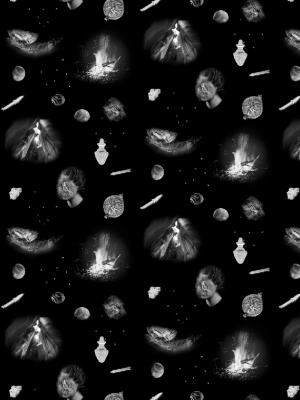
Dears,
Current Obsession’s structure has changed to a slower pace. This means we opted for a deeper investigation towards grinding out a single theme per year. In 2015 we will be obsessing over the Supernatural – the mysterious relationship between what we intuit, what we know, and what we contemplate. Our goal is to bring the exploration process to the readers, give the spotlight to more voices, and see more angles of one theme via different projects.
Read more about the subject in the Introduction to the Supernatural coming up further in the post. We would like to start a conversation about the Supernatural and invite you to contribute to the yearlong quest with your thoughts, words, and works.
Currently we are working on a few more things: in the summer we plan to curate the programme of the Jewellery Symposium Zimmerhof [4-7th June] titled Future Jewellery Icons. It will, among other things, look into iconic and symbolic notions of jewellery. Later in the year, we are planning to launch a new website and release the #4 The Supernatural Issue of the magazine. Finally, we are thrilled to announce that the Supernatural year of research will take the shape of an otherworldly exhibition at the Stedelijk Museum ‘s-Hertogenbosch in The Netherlands.
If you feel somehow connected to the subject, please, drop us a line at
info@current-obsession.com
Abracadabra and much love, CO Team
